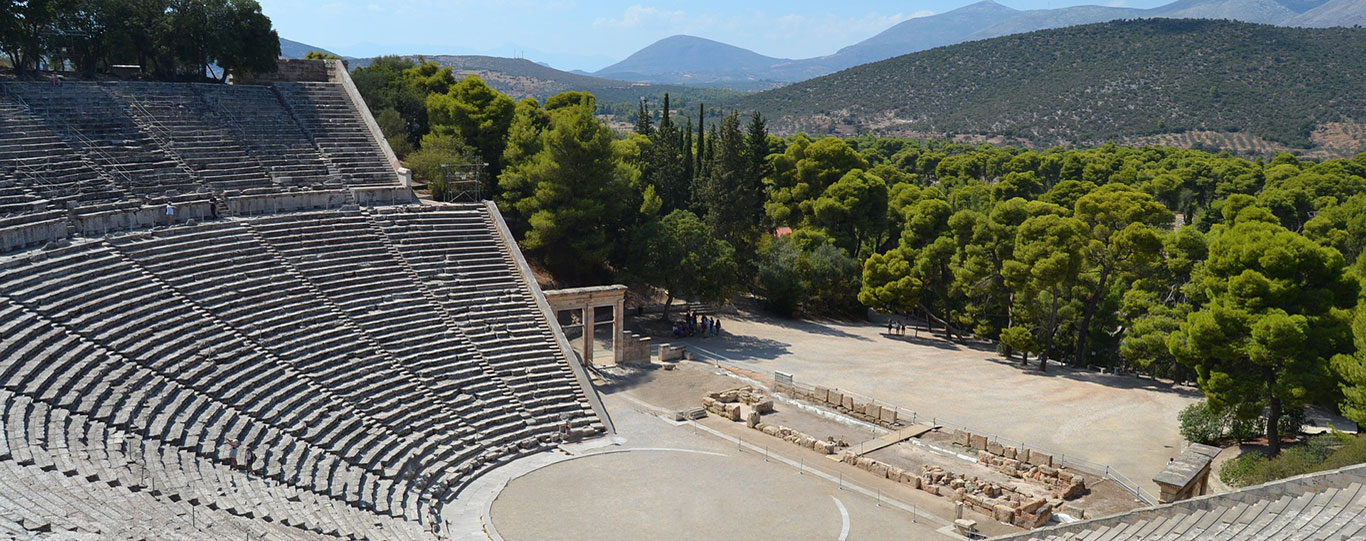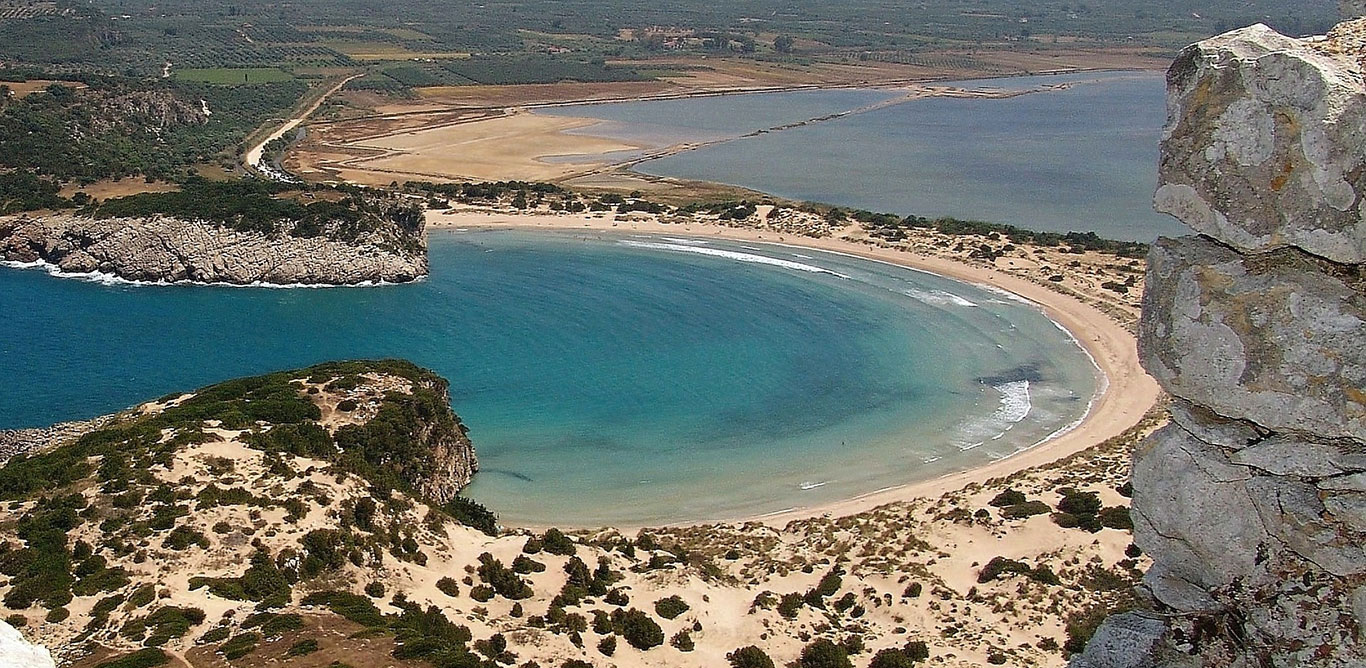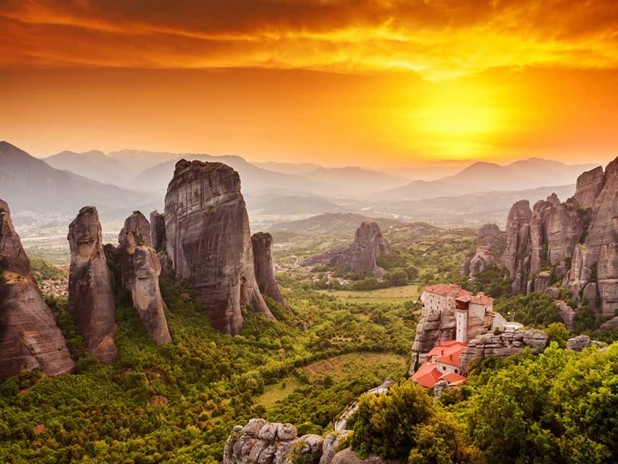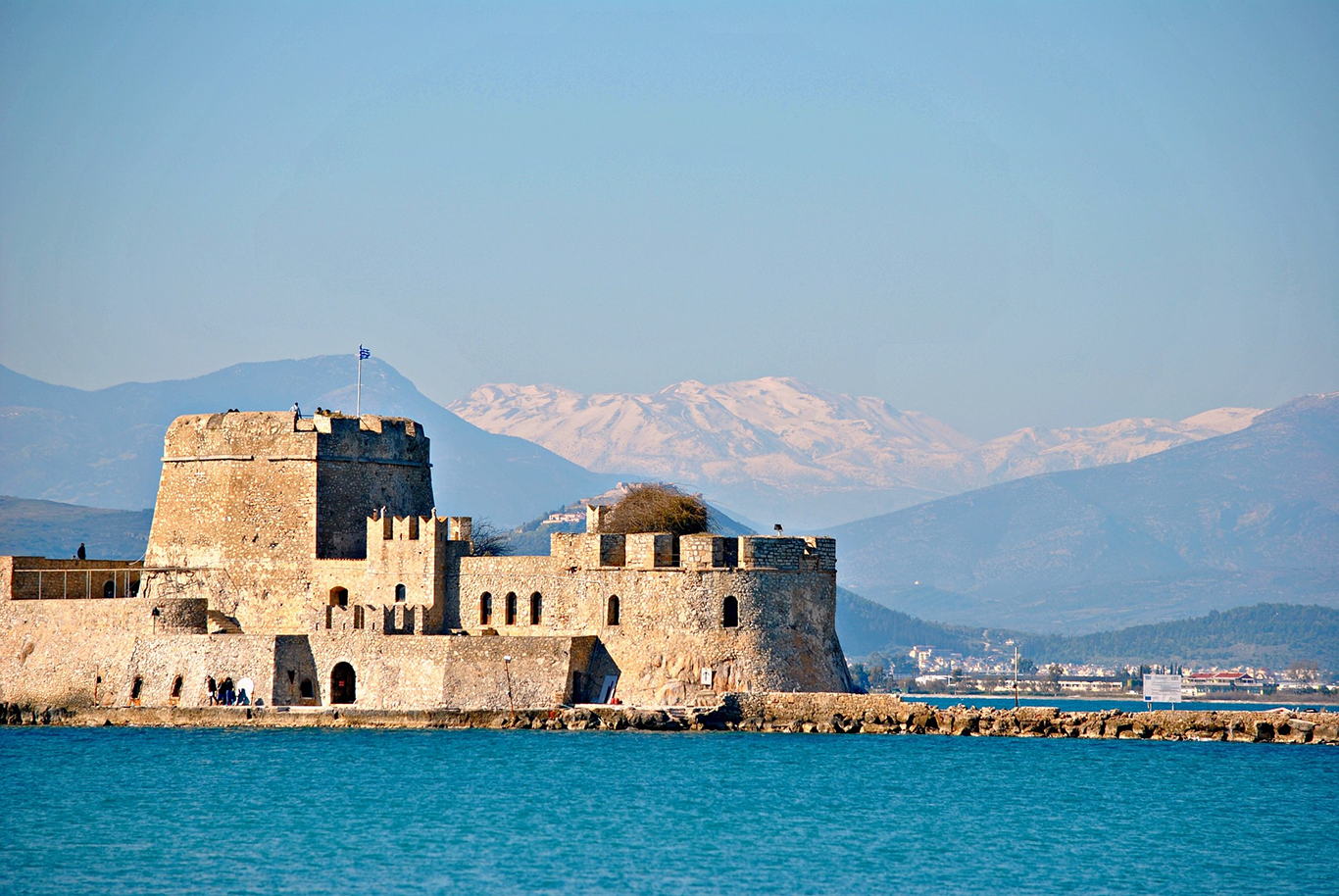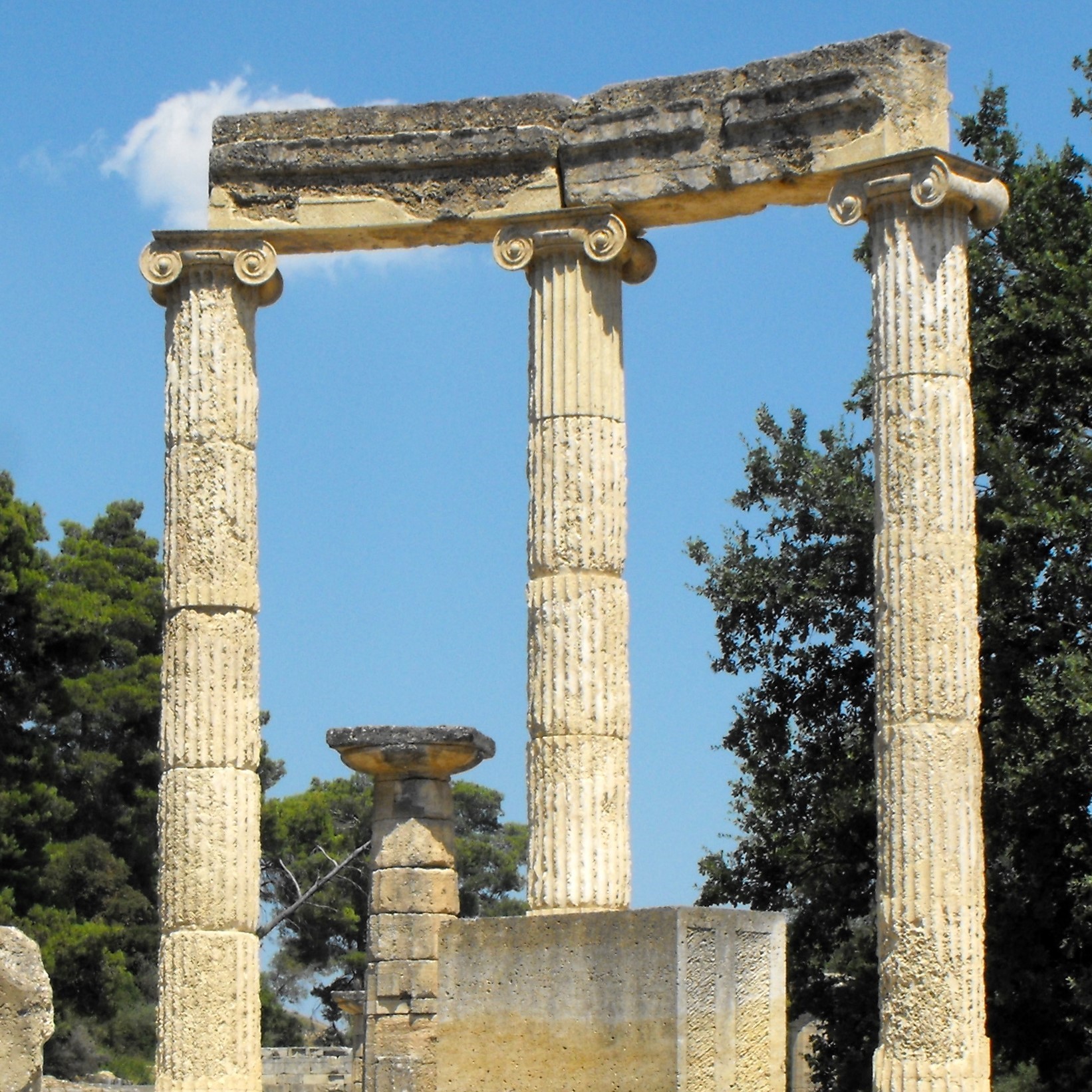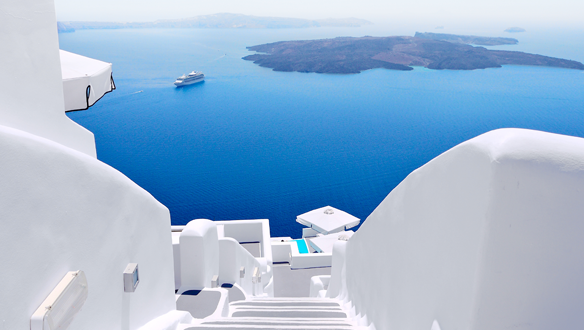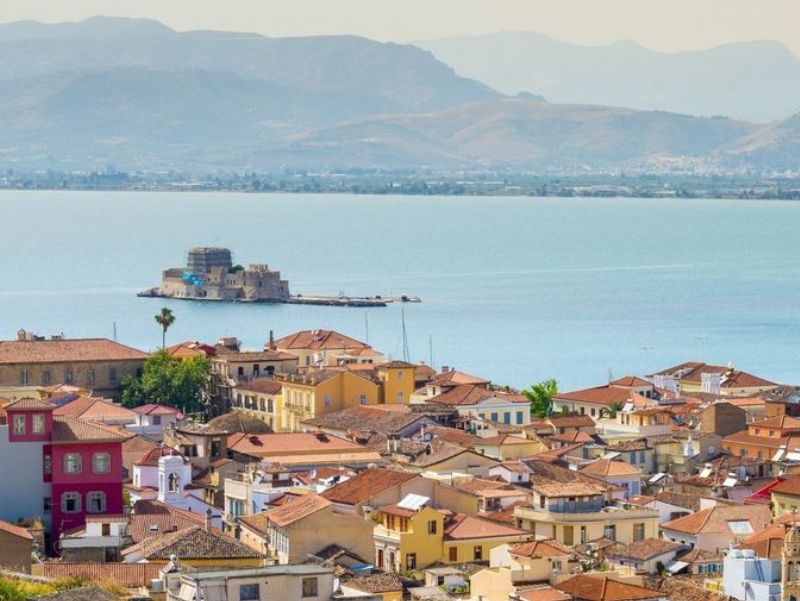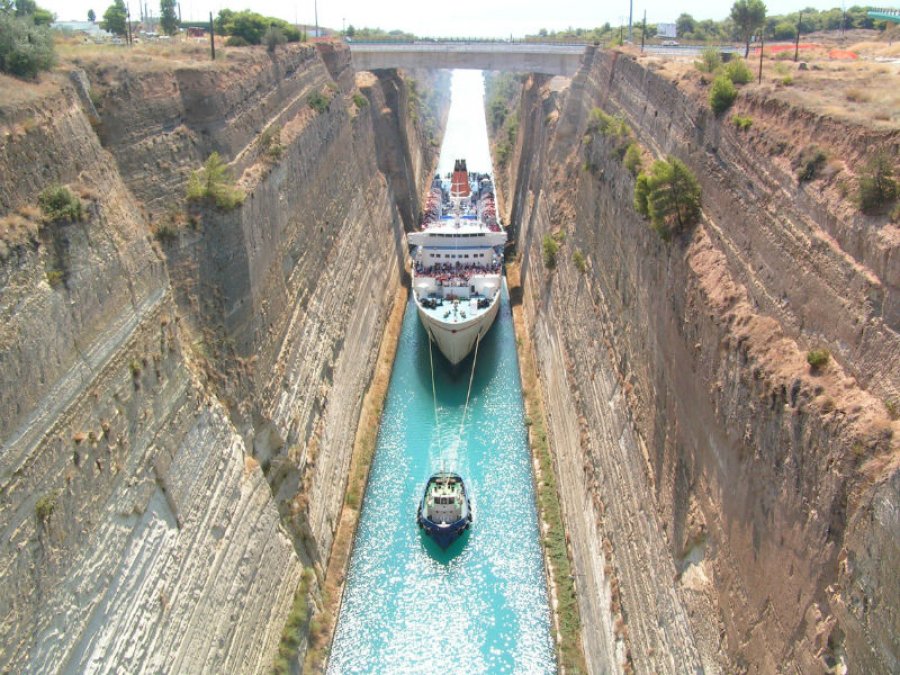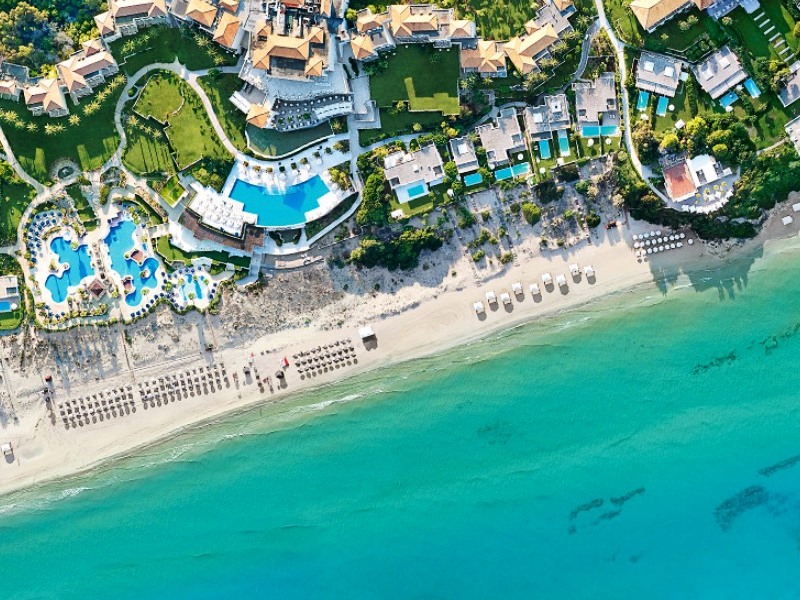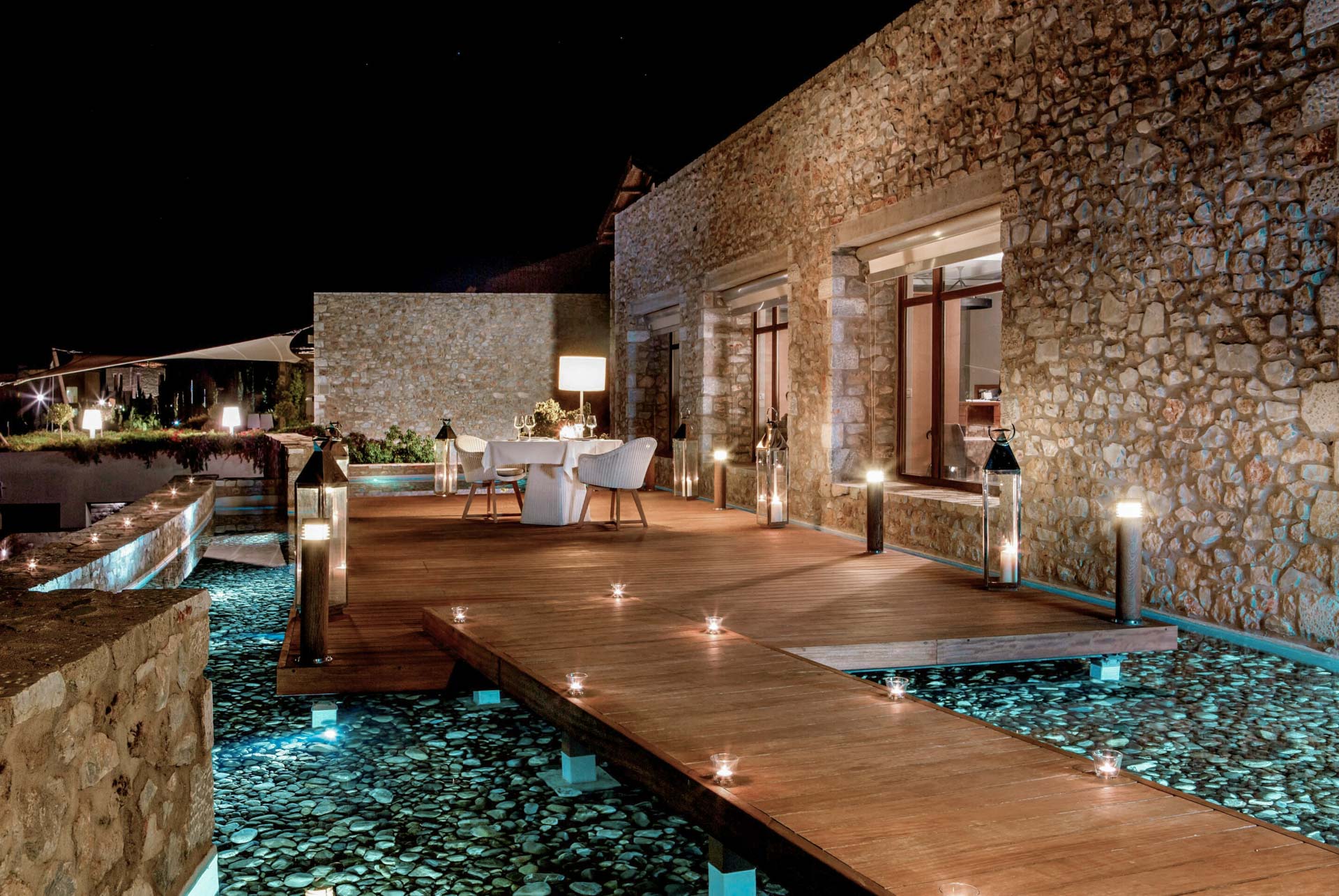The Peloponnese has had a particularly significant and continuous history, trace of which are visible everywhere. Its important archaeological site, traditional settlements and castles attract visitors in every season. There are high mountains, the fertile plains and long sandy beaches.
A FEW WORDS ABOUT PELOPONNESE
Peloponnese – the center of the historical heritage of the ancient Hellenes, the birthplace of Greek culture and the cradle of the whole European civilization. There is hardly a place in a world that could compete with the Peloponnese in number and significance of attractions. Here, in Peloponnese, are the most significant in Greece ancient temples, stadiums and theaters, Venetian fortresses and Crusaders castles, Byzantine churches with well-preserved frescoes and archaeological museums with the greatest exhibits. There were held Olympic, Isthmian and Nemean Games. Legendary heroes Hercules, Perseus, and Jason, kings Agamemnon, Nestor, Leonid and Pelops, sculptors and architects Phidias, Poliklet, Iktin and Polymed have perpetuated themselves here in centuries.
But the Peloponnese attracts tourists not only with its majestic historical past and the traditional originality of its ancient towns, but also with exceptional natural beauty, ecological purity and unique conditions for relaxation. Peloponnese is ideal for holidays both winter and summer, since it’s beautiful in different ways in every season. This region is famous for its mild Mediterranean climate, plenty of greenery, large number of sunny days a year, a clear turquoise sea and magnificent sandy beaches, which are worthily considered one of the best in Greece. On its long beaches, surrounded by pine and olive groves, orange and lemon gardens, in perfect harmony with nature, located wonderful club hotels with luxury spa centers, exquisite restaurants, first-class sports infrastructure and all the other attributes of amazing holidays.
RESORTS IN PELOPONNESE
Kyllini (Killini)
One of the most popular resorts of the Peloponnese. A sunny paradise with golden sandy beaches, picturesque dunes, low green hills, pine forests and olive groves reaching straight to the coast. The length of the sandy beach, awarded a blue flag, reaches 11 km, 2 km of which belong to one of the best complex resort in Greece – Grecotel Mega Resort Olympia Riviera. The other famous hotel resort, which has 1 km of golden sand beach, belongs to the hotel complex – Kyllini Beach. The area can offer a large selection of traditional Greek taverns with excellent seafood cuisine, and from the port Kyllini daily boats depart for the nearest islands of Zakynthos and Kefalonia.
At the top of one of the hills is perfectly preserved the medieval castle of Chlemutsi, built by the crusader Jeffrey Willarduen, with a magnificent panoramic view of the surroundings and islands of Kefalonia, Lefkada, Ithaka.
Skafidia (Skafidia)
This quiet seaside resort with a beautiful sandy beach. It is one of the most charming and green places in Greece with many national Greek taverns and small but beautiful monastery of Moni Skafidias of the 12th century. In the monastery there is a unique miraculous icon of the Virgin Mary, which was found in a boat, moored to the shore.
But the region is mostly famous for Peloponnese’s one of the popular hotel resort – Aldemar Olympian Village and Aldemar Royal Olympian. The complex is located in the middle of lush gardens and olive groves, stretches across golden magnificent kilometer-long sandy beach awarded with a blue flag.
Skafidia has a good location in the central part of the western coast of the Peloponnese, which makes it a convenient starting point for both group and individual trips across the peninsula in all directions. Only 10 minutes ride will bring you to a typical Greek town of Pyrgos (the “high tower”) – the capital of the Elis region, with a lot of traditional pastry shops, taverns and cafes, as well as the municipal market and the Apollo theater designed by Ernest Schiller. And in half an hour’s ride is the ancient Olympia – one of the most popular and significant tourist sites of the Peloponnese.
Costa Navarino a nature resort
A new resort with the incredible beauty of the Mediterranean coast, in the region of Messinia in the southwest of the Peloponnese. Beautiful waterfalls and virgin lagoons, inhabited by pink flamingos and a rare African chameleon, coexist with olive groves, which goes down directly to the endless sandy beaches, the most popular of which are Voidokilia, Navarino Bay, Petrochori, Romanos, Admirolaka and Beech. These breathtaking places were visited and inspired by their divine beauties by many creative people – poets, artists, composers, such as Moliere, Strauss, Victor Hugo. Now this is one of the best destinations in the Mediterranean and the best holiday destination for the European celebrities.
At the same time, Costa Navarino is not only amazingly beautiful, but fulfilled with history. The story of Costa Navarino is as old as Greece itself. Here is the ancient city of Pylos with two medieval castles of Neokastro, Paleokastro and Navarino Bay, where the famous Battle of Narvarino took place. There are also, the remains of the Neolithic sites, the ruins of the palace of King Nestor in Chora and the temple of Apollo Epicurean in Andritsaina, the ancient Messina and the lost Byzantine city of Mystras, the medieval Castle of Methoni and Koroni, are all included in the list of UNESCO historical heritage.
Now days in Costa Navarino there are several newly opened hotels of Deluxe category. In particular, The Romanos Luxury Collection and Westin Resort, whose brands are well known as a part of one of Starwood’s largest hotel chains. These two new hotels – Romanos and Westin meet all the modern requirements of luxury and comfort, is one of the finest luxury resorts in Greece, offering a diverse selection of rooms and suites with private infinity pools amidst lush olive groves, affording majestic views of the Ionian Sea. It should be added that in Costa Navarino is planned the opening of two more luxury hotels Deluxe category of famous chains Banyan Tree and Four Seasons.
Kalogria (Kalogria)
Kalogria is not just a resort. This is a whole national park, a unique habitat with stunning beaches and azure waters. Within the resort there is a protected area of the huge lagoon Prokopos, that stretches almost as far as the eye can see, surrounded by the amazing pine forest of Strofylia, which covers the picturesque hills that approach directly to the coast. The endless Kalogria beach with golden sand stretches for 10 km , marked with a blue flag.
In this quiet resort there are no big hotel complexes, there are a number of not expensive apartments and small hotels with 3*category, the most attractive of which is the Kalogria Beach Hotel. From here it is easy to reach historical sites of the Peloponnese like Olympia, Patras, Kalavryta or Delphi. Not far there is a nearby wild beach “Gianiscari”, which was chosen by nudists and people seeking solitude.
VISIT WHILE IN PELOPONNESE
The Corinth Canal
It is one of the modern hydro technical achievements of man, which turned the Peloponnese peninsula into an island. The sight is really impressive. Sheer walls of 80 meters in height, consisting of multicolored rocks, like a puff cake. The width of the channel is only 23 meters, the depth is not more than 8 meters, and the length is 6434 meters (more than 6 km). From the bridge connecting the banks of the canal, the large barges slowly going down, seem to be toy. The canal can not only be admired from the bridge, but also one can pass it with a sightseeing boat, which departs from Loutraki.
Corinth
Today Corinth is interested for the ruins of the ancient agora with the Temple of Apollo, which, with its 38 monolithic columns, became the prototype of the Athenian Acropolis, Temple of Octavia (the sister of the Roman Emperor Augustus), Pyrene Fountain, Roman Basilica, Lechaion Road with the porticoes, benches and thermal baths of Euricle, as well as a series of medieval bastions on top of the majestic cliff of Acrocorinth with remains of the Aphrodite Temple at an altitude of 575 m. A rich collection of exhibits is also in the archaeological museum of Corinth.
Mycenae
The famous residence of ancient kings, were founded by the hero Perseus, the son of Zeus and Danai, who got the head of the Gorgon Medusa. Then Mycenae were glorified by the king Agamemnon, who led the famous Trojan War, and upon his return was murdered by his wife Clytemnestra and her lover Aegisthus. And, finally, excavated by the famous archeologist and businessman Heinrich Schliemann, who also found Troy and Tirinth. In fact, it is not only one of the most powerful, but also one of the most ancient Greek cities, which gave the name of the whole Mycenaean civilization. Now it is a famous archeological sight, where one can see the remains of fortress walls, gates, royal palace, tombs. A huge number found by Schliemann gold, jewelry, cups and “mask of Agamemnon” exhibited in the Athens National Museum.
Epidaurus
Located in the picturesque, green and highland area of Argolis on the site, where in ancient times was an antique port. In this region, with a wonderful climate and a lot of healing springs, thanks to which in the 4th century BC, here appeared Asclepius – one of the largest sanctuaries in ancient times the God of medicine and healing Asclepius, the son of God Apollo and Koronida.
But the most famous landmark of Epidaurus is an excellently preserved antique theater with perfect acoustics, which Pausanias called “the most harmonious” construction of Greece. A crunch of paper, a sound of a lit match or a drop of a coin on the stage is audible in the upper rows. In the ancient theater there are 55 rows and 12 stairs, and its capacity is 14000 spectators. Every summer, it hosts a traditional theater festival, in which famous theaters, artists and musicians take part.
Nafplion
The first capital of independent Greece, where settled in 1833 the first Greek King Otton Ι. Today Nafplion is a very beautiful Mediterranean city, located in a natural harbor, covered with a picturesque isle with a small Venetian fortress Burdzi, built in 1471. The city is named after the ancient Nafplio – the son of Poseidon and Amymone.
The biggest influence was made by the Venetians, with narrow medieval streets, old charming houses and the impressive fortress of Palamidi with 8 bastions surrounded by walls. The fortress was built in 1686-1715, on the top of a hill 216 meters high, where 999 steps lead. Close to Nafplion, there is Tolo, the most popular summer resort close to the town, with a long sandy beach and relaxing atmosphere.
Sparta
This ancient city was and remains a living legend and the capital of the famous ancient dominant militarized state. Everyone knows the battle of 300 Spartans, who kept under Thermopylae a many thousand Persian army.
Unfortunately, now days there are few traces of antiquity remain in Sparta. Only some fragments of the city walls of the 4th century BCE, the remains of Roman and Byzantine fortifications, the foundation of the sanctuary of Artemis Orthia of the 2nd century BCE, the temple of Athena Khalkoikos and clear shapes of the Roman theater. But the indomitable spirit of the Spartans is still existing in these places. Sparta is usually visited in combination with a 5 km Mistra.
Mystras
A medieval city, founded by the Franks in 1249 after the 4th Crusade. Powerful crusader Guillaume de Viarduin, considered the picturesque hill Mizitra an ideal place for the construction of his castle. In 1262, the city was conquered by the Greeks and built powerful fortress walls, and during the XIII-XIV centuries, many churches and monasteries were built. In XIV-XV centuries the city reached its prosperity and began to be called “Florence of the East”.
Today Mystras is a national museum, it looks as if only yesterday people lived here, and it is considered to be one of the most amazing and perfectly preserved medieval cities in Greece. Among the most interesting and well-preserved buildings, the fortress of Villehardouin with fortress walls, the Despot’s Palace, the Monemvasia and Nauplia Gates, the fountain of Marmara, Metropolis in the form of a small fortress, where the last Byzantine emperor Constantine XI Palaeologus were crowned, the church of St. Nicholas, the Church of St. Sophia, the Evangelistria church, the church of St. Christopher and the chapel of St. George. The churches impress by magnificent frescoes that are real masterpieces of classical Greece and the Paleologic Renaissance.
Monemvasia
This medieval castle town on the southeastern coast of the Peloponnese, is among the most impressive places in Greece. The huge sea rock connected to the mainland with a narrow road. From the basement ground to its top stretches fragments of an ancient fortress wall, which was constructed by Franks, Byzantines, Venetians and Turks.
At the top of the rock in Upper Town stands the Church of Agia Sophia, built in the 12th century with its Byzantine interior. The Lower City is very romantic with its narrow streets, old medieval houses, mostly converted to boutique hotels, and the Church of Christ Helkomenos of the XIII century.
Olympia
Place of origin and holding of the famous Olympic Games, lighting of the Olympic Fire. The sacred land of Zeus the Olympian, to which no army had the right to enter. Olympia impresses today not only with its historical past and impressive monuments, but also with a strong positive energy. According to mythology, Hercules took part in the first Olympic games, in honor of the Tsar Pelop. In the 7th-6th c. the first monuments were built to accommodate the ever-increasing demands of the sanctuary, as it is estimated the Games began in 776 BC.
Games were held every 4 years and lasted 5 days. Only free men were allowed to participate and in the intervals between the competitions the guests were entertained by the cultural program – theatrical performances and declarations. The winners were awarded with a sacred olive tree wreath and life-long glory in the whole Greece. In 391 AD Emperor Theodosius condemned and banned the Olympic Games as unworthy of Christian culture.
The first efforts to discover the monuments of Olympia were those of the French “Expedition scientifique de Moree” in 1829. Systematic excavation in the sanctuary was begun by the German Archaeological Institute in 1875.
More than twenty buildings have preserved to our days, including the Gymnasium, the Palaistra, the Stadium, the temple of Hera, Pritason, Pheidias workshop, Leonidaion, Bouleuterion, Treasuries, Temple of Olympian Zeus, and Philippeion. Many remarkable exhibits are on view in the archaeological museum of Olympia.
Patras
The third largest city in Greece after Athens and Thessaloniki, which became the European Capital of Culture in 2006. Carried out in February-March is the third most colorful after Rio de Janeiro and Venice. One of the business cards of the city is the fantastic two-kilometer Rio-Antirio bridge, built for the 2004 Olympics and connecting the Peloponnese with the mainland.
Patras is conventionally divided into two parts: the more ancient historical Upper Town, and woven from the lace of green streets, picturesque squares and the embankment of Otonos Amalias Lower Town.
The center of the Upper Town is a castle built in the VI century on the ruins of an ancient acropolis, in 805 heroically withstood the siege of the Saracens and nomadic Slavs, and during the Second World War it turned into a sort of “Greek Brest Fortress”. The inner courtyard of the castle is now turned into a beautiful public park. No less interesting is the Roman Odeon (reconstructed), which serves as an open theatrical stage. The richest collection of artifacts of Mycenaean and Roman cultures contains the archaeological museum of the city.
The heart of the lower city is the majestic Cathedral of St. Andrew the First-Called, in which the relics of the “Baptist of All Russia” are stored. Andrew the First-Called – one of the twelve apostles of Christ, preached Christianity in Asia Minor, Greece, Scythia and even reached Kiev. The apostle was crucified on the diagonal cross (Andreevsky), which became a symbol of the Russian fleet, and the apostle himself – the patron of the Russian power. Not without reason, the Order of St. Andrew was the first and highest order of the Russian Empire.
